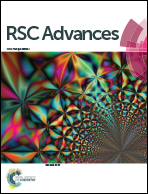Hosta plantaginea (Lam.) Aschers (Yuzan): an overview on its botany, traditional use, phytochemistry, quality control and pharmacology
Abstract
Hosta plantaginea (Lam.) Aschers, as a traditional folk medicine, has been widely used both as a single herb and in prescriptions in Asia mainly due to its anti-inflammatory and analgesic effects. A total of 101 compounds including steroids, flavonoids, alkaloids and others have been isolated from H. plantaginea. Modern pharmacology has revealed that H. plantaginea possesses various therapeutic effects such as anti-inflammatory, analgesic and antibacterial effects both in vitro and in vivo. Although a number of reports on the chemical constituents and pharmacological activities of this plant are available, there is limited research on the bioactive constituents and the mechanism of the biological activities of H. plantaginea. Thus, it is essential to strengthen the research on bioactive constituents and their mechanisms as well as their structure–function relationships in H. plantaginea. Up to now, only three compounds have been established for the quality control of H. plantaginea. However, a comprehensive review on the botany, traditional use, phytochemistry, quality control and pharmacology information about this plant has not been reported so far; thus, a systematic and comprehensive review is very necessary. Therefore, this paper provided a comprehensive overview on the botany, traditional use, phytochemistry, quality control and pharmacology of H. plantaginea and also provided evidence for its further research and clinical applications.



 Please wait while we load your content...
Please wait while we load your content...